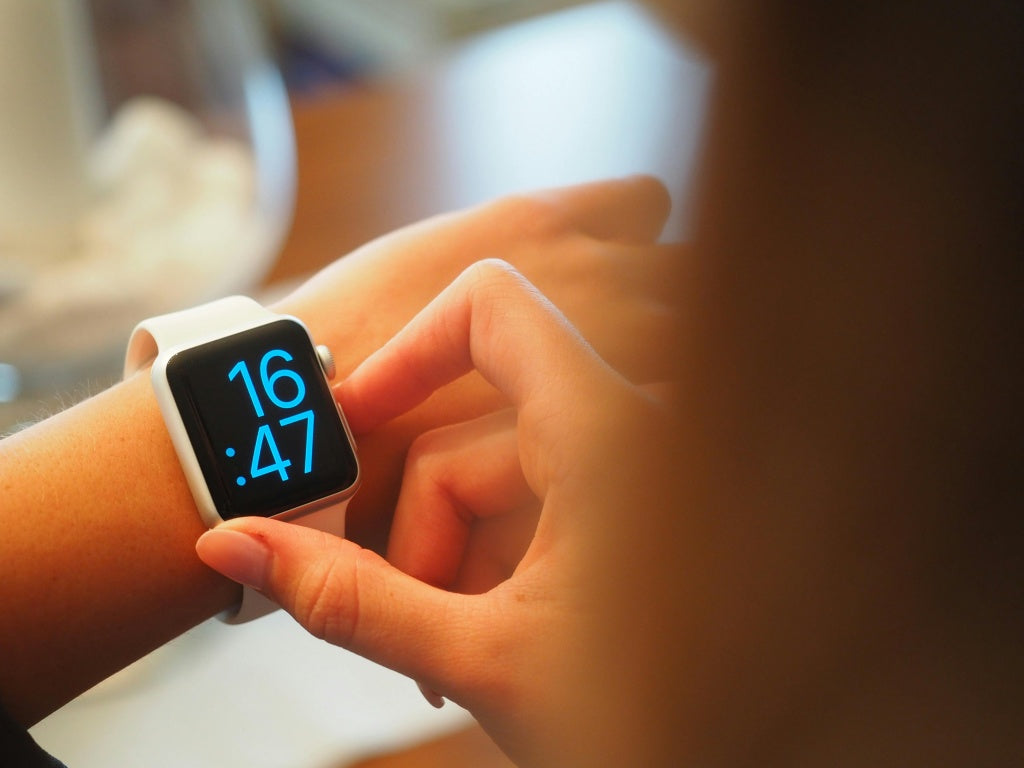Table of contents
Once hailed as the next frontier in wearable technology, smartwatches have seen their popularity wane as more people reconsider the downsides of these devices. True, smartwatches offer undeniable convenience and a wealth of features, but a growing number of users are choosing to abandon them altogether. Concerns over electromagnetic field (EMF) exposure, security threats, and the impact on mental health are driving this shift back to the basics.
Smartwatch EMF Concerns: Unseen Risks of Constant Connectivity
The potential harm from EMF exposure has caught the attention of doctors, researchers, and lawmakers in recent years. These fields are generated by all wireless devices, including smartphones and smartwatches. While the scientific community remains divided on long-term health effects, concern over the unknown is giving many users pause.
The unsettling reality is that when put next to an EMF meter, one of the most common smartwatches can register in the hundreds to thousands of microWatts per square meter . Now, consider the amount of radiation exposure when these devices are right on the wrist, day after day.
Wearable devices like smartwatches are positioned directly on the human body, often for hours every day. Some who use smartwatches to also track their sleep never shed the device. Studies aiming to identify the power absorbed by human tissue produced mixed results, with some finding that levels of EMF emitted by these devices are generally low and fall within the safety limits established by the FCC. However, with the FCC’s safety limits established in 1996 - long before the widespread presence of wireless technology and the invention of the smartwatch - these conclusions do not spark much confidence.
Despite the low levels of EMF emissions, researchers have expressed concerns about the potential long-term effects of chronic exposure, especially when devices are worn close to the body for extended periods. There is ongoing debate about whether this exposure might lead to health issues such as sleep disturbances, headaches, or even more serious conditions like cancer. More long-term studies are needed to fully understand the risks, but in the meantime, there are practical steps we can take to mitigate EMF exposure from smartwatches if getting rid of them completely isn’t an option:
-
Avoid sleeping with the smartwatch on if possible
-
Limit the time spent wearing your smartwatch. Set timers or alarms to remind you to “unplug.”
-
Pair the smartwatches with proven EMF wearable protection devices to shield your body from harmful frequencies.
Because wearable devices are positioned in direct contact with the human body, it’s critical to understand the power absorbed by human tissues . As awareness of these risks grows, more individuals are choosing to minimize their exposure by ditching their smartwatches altogether.
Security Concerns: The Growing Threat of Data Breaches
In addition to health worries, security is a concern for smartwatch users. These devices, which often store sensitive information like health data, GPS location, and even financial details, have proven to be vulnerable to cyberattacks.
Recent reports have highlighted the susceptibility of some smartwatch models to hacking, with cybercriminals able to access personal data or even manipulate the device remotely. For example, security flaws in certain children’s smartwatches have allowed hackers to track their location or communicate with them, bypassing parental controls. Parents are concerned, and understandably so. It’s raised the question, are these wearable devices putting us in harm’s way?
Mental Health Concerns: The Psychological Toll of Constant Alerts
Beyond physical and security concerns, smartwatches are also being scrutinized for their impact on mental health. People often speak of “digital detox,” and “unplugging” from their devices. But what happens if the device is literally attached to their body, sometimes for twenty-four hours out of the day?
The very features that make these devices appealing—constant connectivity, real-time notifications, and fitness tracking—are also contributing to increased stress and anxiety for many users.
Mental Overload
After all, smartwatches are designed to keep users constantly informed, but this perpetual flow of information can be overwhelming. Notifications for missed calls, emails, social media alerts, and even fitness goals create a sense of urgency that can be mentally exhausting. Users report feeling pressured to respond to every alert, track every step, and close every activity ring, which can lead to a heightened state of stress.
Prakhar Khanna, a technology journalist, detailed his decision to stop using his smartwatch, particularly because of the mental strain it caused. "The habit sucked me first into the smartwatch and then into the app. I’d barely be awake, and instantly I’d be bombarded with data," Khanna shared. "There is something liberating about not being a slave to the data."
This sentiment is becoming increasingly common as more individuals seek to regain control over their mental well-being by reducing their reliance on smart devices. The constant connectivity that smartwatches provide was once seen as a benefit. Now, we’re seeing the value in taking a step back from constant technology. It’s now being recognized by many as a source of unnecessary stress and distraction, keeping us from being present and engaging in the moment.

The Move Toward Simplicity
As a result of these growing concerns, a noticeable trend toward simplicity is emerging. Many former smartwatch users are returning to traditional watches. It brings peace of mind by:
-
Avoiding the constant stream of notifications
-
Reducing the risk of cyberattacks
-
Lowering overall exposure to EMFs
The initial excitement surrounding smartwatches is giving way to a more cautious approach as users weigh the potential risks against the benefits. As the technology continues to evolve, it remains to be seen whether manufacturers can address these concerns or if the trend toward simpler, less connected devices will continue to grow.





